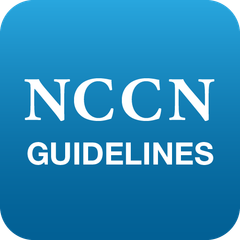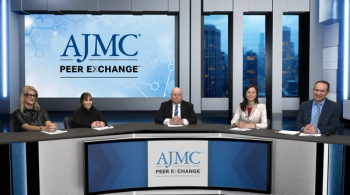
Evaluating Optimal Treatment Strategies for Patients with PV
Dr Gerds provides insight regarding the evaluation of dosing and effectiveness in PV treatment.
Episodes in this series

Aaron Gerds, MD, MS: Optimal dosing of a drug, whether we’re talking interferons, hydroxide or ruxolitinib, really keys [in] on a couple of pieces. One is certainly keeping the hematocrit under 45%, which is tantamount to the treatment policy theme overall with a set of reductive agents or even with lobotomies alone. So again, keeping the hematocrit under 45%. Secondarily, we also want to make sure…a patient’s symptoms are under control, and they’re not having an adverse events or [adverse] effects from that medication. And any of those things can certainly trigger a quote-unquote “treatment failure,” where failure [of] treatment is not achieving the goals for that individual patient. The ELN, the European LeukemiaNet, has a defined set of criteria for treatment failure that is often used in the setting of clinical trials. Although I think in everyday practice those can be a little bit stringent and is a good place to start, I don’t think [it] is the end all, be all. Not every patient treated with hydroxyurea needs to be on 2 g a day and [is] still having elevated blood counts. So I think we can think about pivoting away from some of these medications more quickly now that there are several options available. And both the…criteria for disease resistance, as well as other considerations for moving onto second-line therapy are detailed in the guidelines. For each of these agents, we think about a couple of different things. One, certainly with hydroxyurea, I often watch the MCV [mean corpuscular volume]. If a patient has a pretty elevated MCV, say, 107 or so, and their hematocrit is still not under control, I’m not sure they’re going to get there with hydroxyurea, and that might prompt me to change agents as well. With interferons, we often run into the [adverse] effect of liver enzyme elevation as well as…lymphopenia, and that might prompt a move to a second agent where their counts are still not under control and of pushing the dose. And lastly, with ruxolitinib, certainly we’re looking for [adverse] effects like weight gain, liver enzyme elevation, the development of precancerous skin lesions to kind of say, OK, we’re probably not going to get this under optimal control. We should probably move to a different agent. So certainly each of the individual agents have kind of these extra triggers to think about alternative therapies.
When thinking about the treatment of polycythemia vera [PV], there’s kind of just 2 beds, right? There’s 2 kinds of constructs we build our treatment framework around. One is keeping the hematocrit under 45%. So that’s where if a patient is lower risk, we think about using phlebotomies, and [if] a patient is higher risk or symptomatic, we might think about using a set of reductive agents like hydroxyurea, interferons, or ruxolitinib. The other kind of column or category is the use of aspirin. Aspirin doesn’t necessarily lower the counts, but it can reduce the risk of outcomes. There was the…study, which is a randomized prospective trial where half the patients got aspirin, half did not. Aspirin reduced the relative risk… roughly half for patients with polycythemia vera, the risk of thrombosis or thrombosis-related death, that is. And so really, in my mind, there’s 2 kind of columns of treatment. One is keeping them adequate, [hematocrit] under [45%]. The other is use of aspirin. In the E class study, the dosing was 100 mg. Of course, here in the United States, in North America, we typically prescribe 81 mg, which is shown to be equally efficacious. If a patient is also on a blood thinner for another reason, say a patient has atrial fibrillation is on a DOAC [direct oral anticoagulant], you wouldn’t necessarily need to do dual anticoagulation, an antiplatelet agent in addition to the DOAC. The blood thinner has been shown to increase the risk of bleeding, but not necessarily reduce the risk of thrombosis in patients with polycythemia vera and other MPNs [myeloproliferative neoplasms]. So there are some subtleties with that. But, in general, the recommendation is to use low-dose aspirin in all patients with polycythemia vera, if [the patient is] not already on some sort of antiplatelet or anticoagulation.
Phlebotomies are always tricky to put into the treatment algorithms because [they] can be used in lots of different ways. Certainly it can be the main driver for keeping the hematocrit under 45% for patients who have low-risk polycythemia vera, meaning younger and never having a history of a blood clot before. It’s kind of the main cytoreductive strategy in patients who are high risk and don’t do well with medication; sometimes we use this as an adjunct. Someone will be on hydroxyurea and getting phlebotomy. It’s not ideal; it’s not optimal. But for some individuals it seems to work the best. Again, kind of the 2 pillars of treatment are really keeping them adequate under 45%, as well as the low-dose aspirin for keeping the hematocrit under 45%. Sometimes we have to combine phlebotomy to supplement whatever the agent of choice is doing, whether we’re talking hydroxyurea, interferons, or ruxolitinib. So it’s a tricky treatment because it’s sometimes used along with a cytoreductive agent, or even just by itself. But, you know, certainly can provide additional therapy and additional means to keep that those counts under target and under control.
Transcript is AI-generated and edited for clarity and readability.
Newsletter
Stay ahead of policy, cost, and value—subscribe to AJMC for expert insights at the intersection of clinical care and health economics.








































